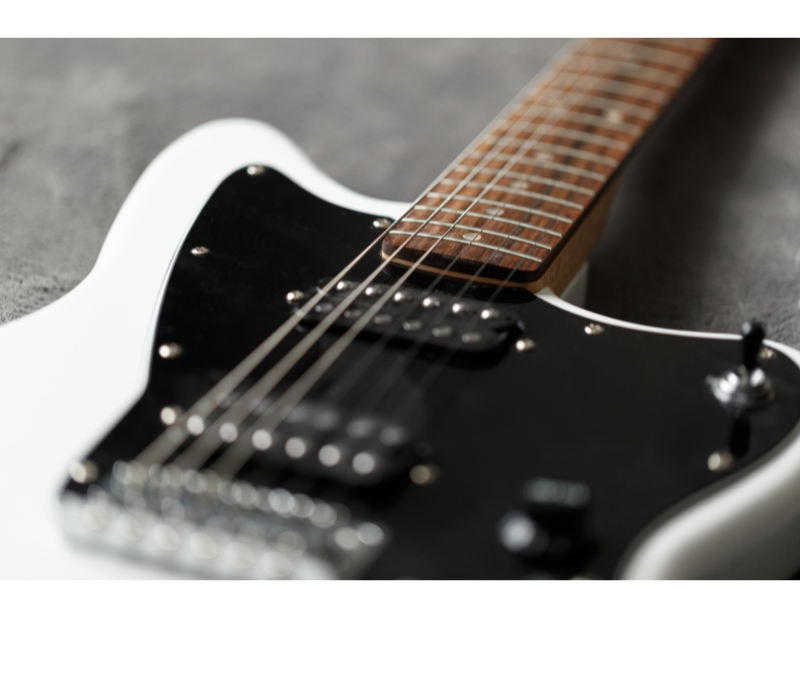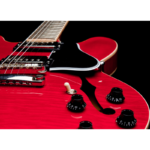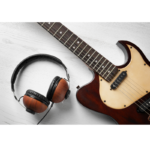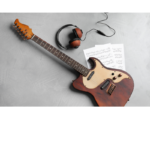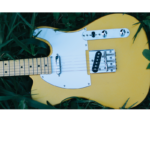The journey to mastering the guitar is a rewarding one, filled with both challenges and exhilarating breakthroughs. Central to this journey is understanding the guitar notes on the fretboard and how to play scales effectively. Whether you’re a novice guitarist or an experienced player looking to deepen your knowledge, this comprehensive guide will help you navigate the fretboard, memorize guitar notes, and play scales with confidence.
Understanding the Fretboard
The fretboard, also known as the fingerboard, is the heart of the guitar. It’s where your fingers press down on the strings to create different notes. Each string on the guitar represents a musical note, and each fret represents a half-step (or semitone) in the musical scale. Understanding the layout of the fretboard is essential for playing scales, chords, and melodies.
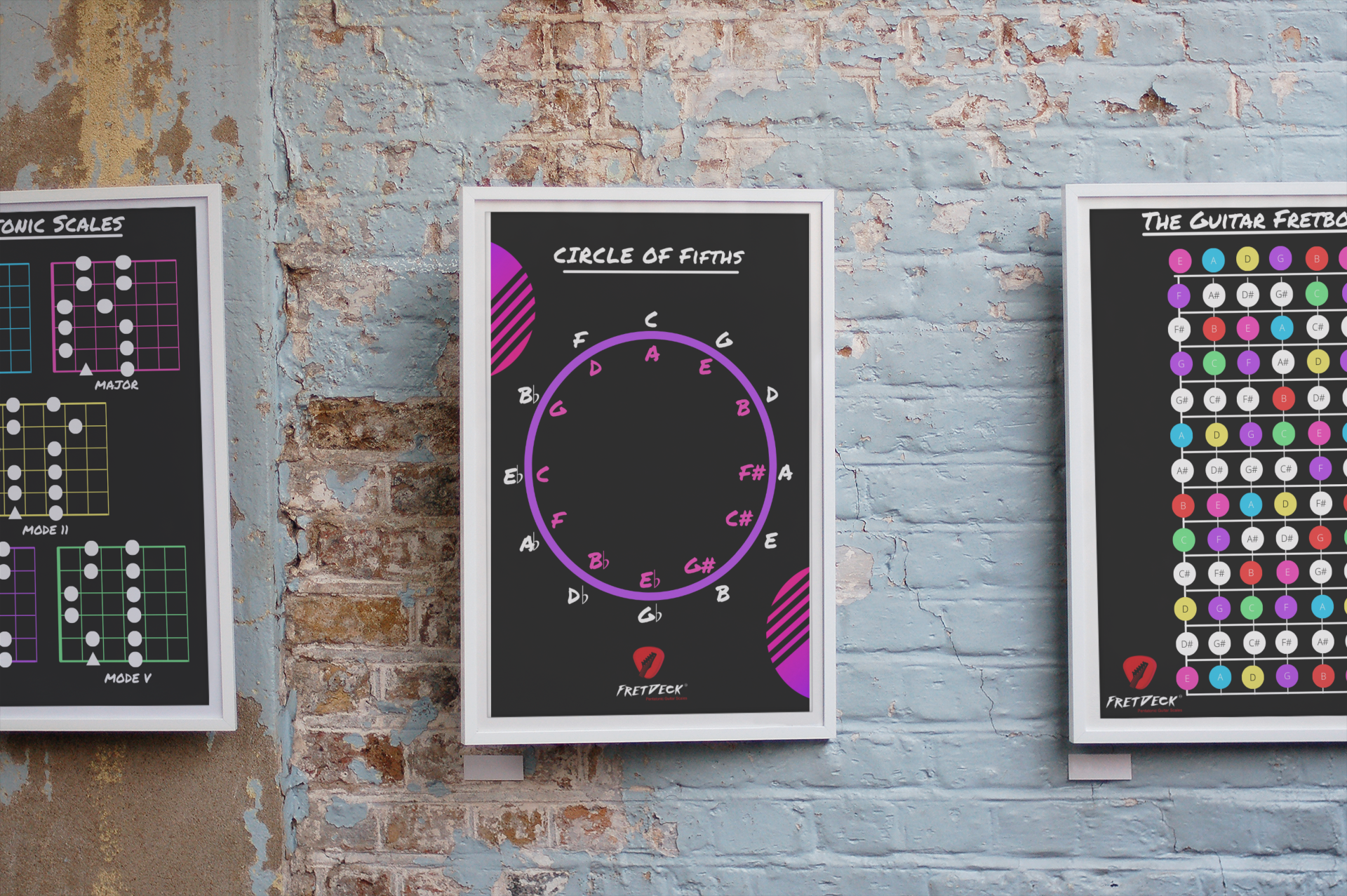
Download FREE Guitar Charts!
We have 27 FREE guitar charts to help you learn the guitar fretboard. Learn How to play chords and scales with these free resources.
Free Guitar Resources
The Basics of Guitar Notes on the Fretboard
Before diving into scales, it’s important to understand the basic layout of notes on the fretboard. A standard guitar has six strings, each tuned to a specific note. From the thickest string (low E) to the thinnest string (high E), the standard tuning is E-A-D-G-B-E.
Here’s how the notes on the open strings correspond to the musical notes:
- 6th string (Low E): E
- 5th string (A): A
- 4th string (D): D
- 3rd string (G): G
- 2nd string (B): B
- 1st string (High E): E
Moving up the fretboard from the open string, each fret increases the note by a half step. For instance, the first fret on the low E string is an F, the second fret is an F#, and so on.
Memorizing Guitar Notes on the Fretboard
Memorizing the guitar notes on the fretboard can seem daunting at first, but with consistent practice and the right strategies, it becomes manageable. Here are some effective techniques:
- Learn the Natural Notes: Start by memorizing the natural notes (A, B, C, D, E, F, G) on each string. Remember that there is no sharp or flat between B and C, and E and F.
- Use Octave Patterns: Octave patterns help in locating the same note on different strings. For example, the note on the 5th fret of the 6th string (A) is the same as the open 5th string (A).
- Chunking Method: Break the fretboard into smaller sections and focus on one section at a time. Practice finding notes within a specific region before moving on to another.
- Practice Regularly: Consistency is key. Dedicate a few minutes each day to practice finding and naming notes on the fretboard.
- Visualization: Visualize the fretboard and mentally map out where the notes are. This helps reinforce your memory even when you’re not playing.
Playing Scales on the Fretboard
Scales are fundamental to music theory and guitar playing. They provide the building blocks for melodies, solos, and improvisation. Understanding scales and how to play them on the fretboard is crucial for any guitarist.
The Major Scale
The major scale is one of the most important scales in Western music. It consists of seven notes with a specific pattern of whole and half steps: W-W-H-W-W-W-H (where W stands for whole step and H for half step).
Here’s how to play a G major scale on the guitar:
G Major Scale (2 Octaves):
e|-------------------------2-3-|
B|---------------------3-5-----|
G|----------------2-4-5--------|
D|----------2-4-5--------------|
A|----2-3-5--------------------|
E|-3-5-------------------------|
Practice this pattern until you can play it smoothly and accurately. Pay attention to the notes and their positions on the fretboard.
The Minor Scale
The natural minor scale also consists of seven notes, but with a different pattern: W-H-W-W-H-W-W.
Here’s how to play an A minor scale on the guitar:
A Minor Scale (2 Octaves):
e|-------------------------0-1-|
B|---------------------1-3-----|
G|-----------------0-2---------|
D|-----------0-2-3-------------|
A|-----0-2-3-------------------|
E|-0-1-------------------------|
Again, practice this pattern diligently, focusing on the notes and their locations on the fretboard.
Pentatonic Scales
Pentatonic scales are five-note scales that are incredibly versatile and widely used in various genres. The major and minor pentatonic scales are especially popular.
A Minor Pentatonic Scale:
e|--------------------------5-8-|
B|---------------------5-8------|
G|-----------------5-7----------|
D|-------------5-7--------------|
A|-------5-7--------------------|
E|-5-8--------------------------|
C Major Pentatonic Scale:
e|---------------------------7-8-|
B|----------------------8-10-----|
G|-----------------7-9-----------|
D|------------7-10---------------|
A|------7-10---------------------|
E|-8-10--------------------------|
Pentatonic scales are great for improvisation and soloing due to their simplicity and musicality.
Combining Theory with Practice
Understanding the theory behind scales and guitar notes on the fretboard is important, but combining this knowledge with practical playing is where the magic happens. Here are some tips to effectively integrate theory and practice:
- Play Along with Songs: Identify the key of a song and play along using the appropriate scale. This helps reinforce your understanding of scales in a musical context.
- Improvise: Use the scales you’ve learned to create your own solos and melodies. Experiment with different patterns and note combinations.
- Transcribe Solos: Listen to solos by your favorite guitarists and try to transcribe them by ear. This not only improves your ear training but also helps you see how scales are used in real music.
- Use Backing Tracks: Practice scales and improvisation with backing tracks in different keys and styles. This provides a more dynamic and engaging practice experience.
Advanced Fretboard Navigation
As you become more comfortable with the basics, you can start exploring more advanced techniques for navigating the fretboard.
Modes
Modes are variations of scales that start on different notes of the original scale. Each mode has a unique sound and mood.
For example, the G major scale has seven modes:
- Ionian (Major): G – A – B – C – D – E – F# – G
- Dorian: A – B – C – D – E – F# – G – A
- Phrygian: B – C – D – E – F# – G – A – B
- Lydian: C – D – E – F# – G – A – B – C
- Mixolydian: D – E – F# – G – A – B – C – D
- Aeolian (Minor): E – F# – G – A – B – C – D – E
- Locrian: F# – G – A – B – C – D – E – F#
Each mode offers a different color and can be used to create diverse musical expressions.
Arpeggios
Arpeggios are broken chords where the notes are played individually. They are essential for creating melodic solos and adding harmonic richness to your playing.
Here’s an example of an A minor arpeggio:
A Minor Arpeggio:
e|--------------------5-8-|
B|-----------------5-8----|
G|--------------5-7-------|
D|-----------7-----------|
A|-----5-7---------------|
E|-5-8-------------------|
Practice playing arpeggios in different positions and inversions to gain a deeper understanding of chord tones and their locations on the fretboard.
Conclusion
Mastering the guitar notes on the fretboard and learning how to play scales is a fundamental part of becoming a proficient guitarist. It opens up a world of musical possibilities and allows you to express yourself more freely through your instrument.
Remember, the key to success is consistent practice, patience, and a genuine love for the music you’re creating. Use the techniques and exercises outlined in this guide to build a solid foundation, and keep exploring new musical horizons. Happy playing!
In this blog post, we’ve covered the essentials of understanding and memorizing guitar notes on the fretboard, playing major and minor scales, and integrating theory with practice. By following these steps and practicing regularly, you’ll develop a deep and intuitive understanding of the fretboard, enabling you to play scales and create music with confidence and creativity.

Download FREE Guitar Charts!
We have 27 FREE guitar charts to help you learn the guitar fretboard. Learn How to play chords and scales with these free resources.
Free Guitar Resources

